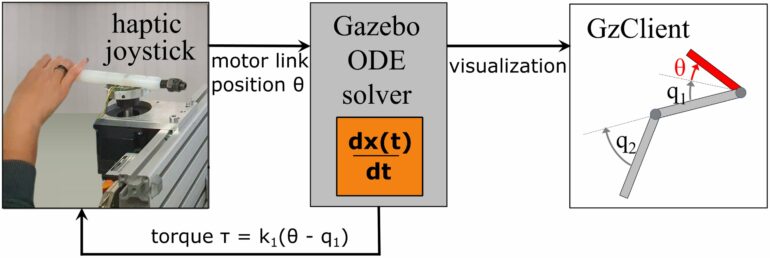Four-legged animals that start walking and gradually pick up speed will automatically fall into a trot at some point. This is because it would take more energy not to change gait. This correlation was discovered more than 40 years ago. Now, Alin Albu-Schäffer, a professor at the Chair of Sensor-based Robotic Systems and Intelligent Assistance Systems at TUM, has successfully transferred this method to the movement of robots.
Experts use the term “intrinsic dynamics” for the way humans and animals perform energy-efficient movements. For example, they adjust the stiffness of their muscles when they walk on a more rigid surface. These intrinsic adaptations, which happen automatically, are challenging to identify in humans and complex robotic systems.
Tool filters out the most economical movements
But a new tool developed by a team led by Prof. Albu-Schäffer at TUM makes this possible. “For the first time, we have succeeded in making these intrinsic, highly efficient movements calculable. The tool makes it possible to find out which movements of a system are particularly economical.”
An important test object in the team’s research is BERT, a four-legged robot that looks like a small dog. BERT was designed by Prof. Albu-Schäffer at the German Aerospace Center (DLR). The research, which focuses on “efficient and versatile locomotion with legs,” is published in PLOS Computational Biology.
The researchers identified six movement patterns for BERT, which Prof. Albu-Schäffer describes as exceptionally effortless and which would not require any energy in a world without friction. Some correspond to familiar gaits of quadrupeds, such as walking, trotting, or hopping.
“We have thus confirmed the hypothesis that efficient gaits can be realized by exploiting natural oscillation patterns,” explains Prof. Albu-Schäffer, who is also involved in the Munich Institute of Robotics and Machine Intelligence (MIRMI).
Hitting natural oscillations with precise timing
To realize these movements in a natural system with friction, a computer-controlled regulator has now been added that delivers an impulse at the right moment.
“You can compare it to a child sitting on a playground swing and receiving an energy impulse at the highest point from the parent who is pushing,” explains Annika Schmidt from Prof. Albu-Schäffer’s research team. With one difference: “Humans don’t need a lot of equations in their heads to time their push exactly—they do it intuitively,” says the doctoral student, who has spent several years studying how to teach robots the right rhythm. That research was presented at the 2024 European Control Conference.
Success is demonstrated in a race between three BERT models. The robot dog, which has been programmed with the intrinsic movement method, tends to jump and move much faster and more dynamically than its siblings, which rely on more conventional movement patterns.
More information:
Annika Schmidt et al, Finding the rhythm: Humans exploit nonlinear intrinsic dynamics of compliant systems in periodic interaction tasks, PLOS Computational Biology (2024). DOI: 10.1371/journal.pcbi.1011478
Arne Sachtler et al, Swing-Up of a Weakly Actuated Double Pendulum via Nonlinear Normal Modes, 2024 European Control Conference (ECC) (2024). DOI: 10.23919/ECC64448.2024.10590854
Provided by
Technical University Munich
Citation:
New tool calculates intrinsic dynamics for effortless robot movements (2024, November 18)



